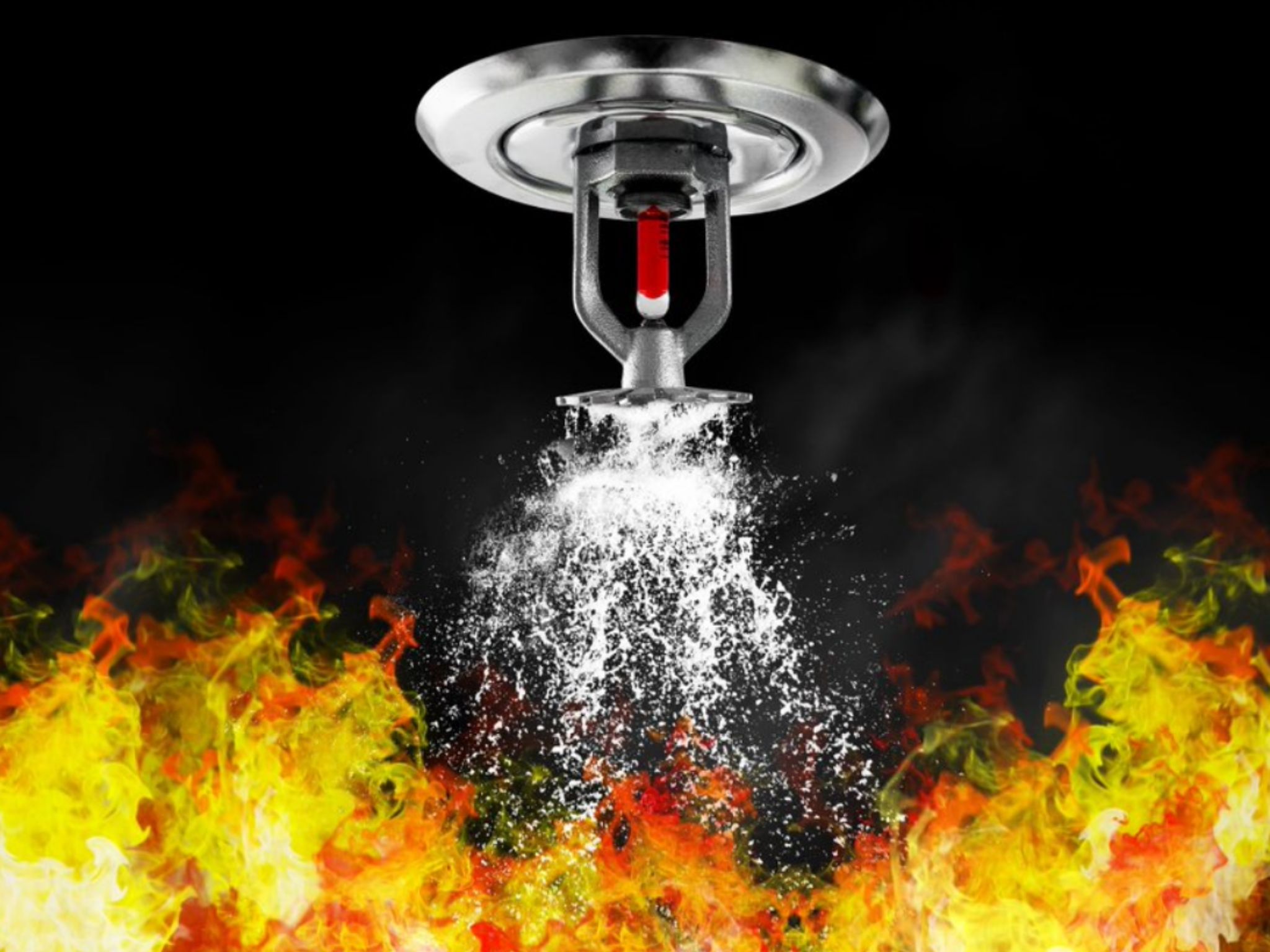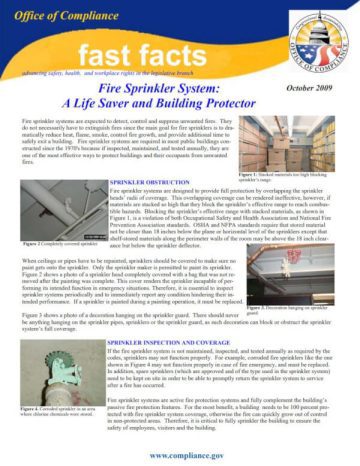Fire Sprinkler System: A Life Saver and Building Protector
Fire sprinkler systems are expected to detect, control and suppress unwanted fires. They do not necessarily have to extinguish fires since the main goal for fire sprinklers is to dramatically reduce heat, flame, smoke, control fire growth, and provide additional time to safely exit a building. Fire sprinkler systems are required in most public buildings constructed since the 1970’s because if inspected, maintained, and tested annually, they are one of the most effective ways to protect buildings and their occupants from unwanted fires.
SPRINKLER OBSTRUCTION
Fire sprinkler systems are designed to provide full protection by overlapping the sprinkler heads’ radii of coverage. This overlapping coverage can be rendered ineffective, however, if materials are stacked so high that they block the sprinkler’s effective range to reach combustible hazards. Blocking the sprinkler’s effective range with stacked materials, as shown in Figure 1, is a violation of both Occupational Safety and Health Association and National Fire Prevention Association standards. OSHA and NFPA standards require that stored material not be closer than 18 inches below the plane or horizontal level of the sprinklers except that shelf-stored materials along the perimeter walls of the room may be above the 18 inch clearance but below the sprinkler deflector.
When ceilings or pipes have to be repainted, sprinklers should be covered to make sure no paint gets onto the sprinkler. Only the sprinkler maker is permitted to paint its sprinkler. Figure 2 shows a photo of a sprinkler head completely covered with a bag that was not removed after the painting was complete. This cover renders the sprinkler incapable of performing its intended function in emergency situations. Therefore, it is essential to inspect sprinkler systems periodically and to immediately report any condition hindering their intended performance. If a sprinkler is painted during a painting operation, it must be replaced.

